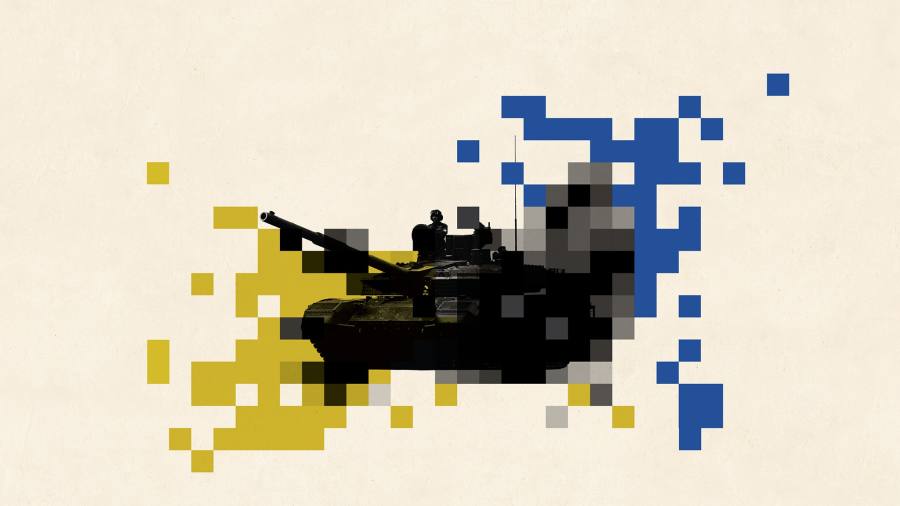What the digital front lines in Ukraine say about the future of war

Since Russia invaded Ukraine on February 24, the world’s eyes have been fixed on firefights and missile strikes, many around the capital Kyiv. But Alexander Bornyakov has been watching a little-noticed fight around the country’s data servers.
Bornyakov, 40, who before the war was a hoodie-sporting serial entrepreneur, is now the country’s deputy minister for digital transformation. As the invasion unfolded, Bornyakov was preoccupied by his government’s servers, many of which were located in the suburbs around the capital, directly in the line of advancing Russian forces. A team of Ukrainians furtively rushed — under fire — to remove them, some in the nick of time, Bornyakov told me recently by phone from Kyiv, where he is now huddled with the rest of Zelensky’s leadership. “There was a huge effort,” he said.
Then, something less cinematic but equally important happened: the Ukrainian parliament convened to adopt a law altering cloud storage regulations. “Before the war, the data couldn’t [legally] be stored in the cloud,” Bornyakov explained. A sceptic might argue that Kyiv could have adopted these measures sooner if it had taken the Russian invasion threat more seriously earlier on. But the crucial point is that while the real-world kinetic aspects of war dominate our attention, those servers and the cloud represent vital fronts in the conflict.
This is partly because the Ukrainian side, aided by the west, has been surprisingly successful in fending off Russian cyber attacks, as General Paul Nakasone, head of US Cyber Command, told a military cyber conference I recently participated in at Vanderbilt University. But it also reveals important factors that aren’t strictly technological, namely the power of networks.
Even before the rise of digital technologies, elements of Ukrainian society had a long tradition of using horizontal, peer-to-peer structures to organise. This is in subtle contrast to Russia, where vertical institutional structures have often dominated. (I say “often” because there isn’t a rigid demarcation between the two; the distinctions are on a spectrum of difference.)
In the post-independence years, the spread of digital technology tapped into this Ukrainian networking culture and is now making its society (and military) more resilient in the fight against Russia than many outsiders expected. As a result, one way to frame the Ukraine-Russia conflict is to see it as a test between using a networked approach to solving problems, versus the type of top-down, authoritarian system that dominated Russia in the past. So far, networks are winning.
This was not at all obvious three decades ago, when I worked and lived in the former USSR. Then, Ukraine was dominated by smokestack industries, agriculture, Soviet bureaucracy and many of the worst aspects of communist-era blight, including corruption. These did not disappear, but in the early 21st century a digital industry emerged, fostered in part by the fact that the country has a large pool of scientists and engineers. As western companies started to outsource IT operations to Ukraine, places such as Dnipro and Kyiv became hubs.
One consequence was that Ukraine had one of the highest rates of crypto adoption, per capita, in the world. Another was that three years ago, Mykhailo Fedorov, the newly appointed digital minister, assembled a crew of young techies, including Bornyakov, to create a self-styled “digital government” with an app called Diia (The State and I), following in the footsteps of Estonia. This proved very successful, unlike many of Zelensky’s other economic policies, which had mixed results.
According to Bornyakov, “Diia was downloaded by 15 million Ukrainians. It became the most popular app in app stores — with digital passports, papers, everything.” And it has since delivered an unexpected war-time benefit: if displaced Ukrainians have their phones, they can swap information and organise into groups, but also often continue their financial, educational and work activities, and prove identities, helping to keep Ukraine functioning to some degree.
It has also helped that Elon Musk has donated 15,000 Starlink routers to keep the internet running, while a vast network of non-Ukrainian techies across the globe has donated huge quantities of time and money in support. That is partly because years of western IT outsourcing have seen Ukrainian specialists embedded in companies around the world. “I’m working with crypto companies to get the word out, to help — we all are,” says Brittany Kaiser, a crypto luminary and former Cambridge Analytica whistleblower.
Has this produced a complete digital government? Sadly not. Can it survive future Russian cyber attacks? No one knows. But if nothing else, the tale underscores a crucial point about war: it can reveal the benefits of innovation in unexpected ways. That might yet help Ukraine reap some economic benefits in a postwar world — and give future historians a reason to celebrate the power of networks over top-down autocracy.
Follow Gillian on Twitter @gilliantett and email her at gillian.tett@ft.com
Follow @FTMag on Twitter to find out about our latest stories first